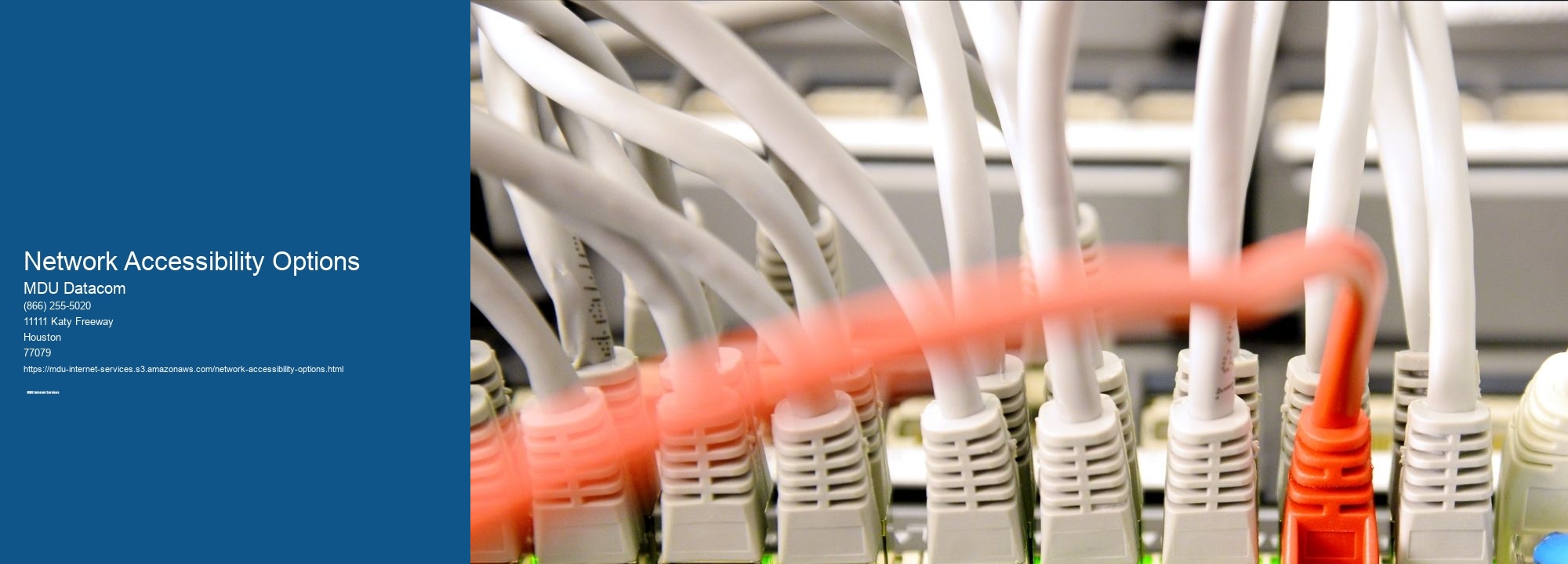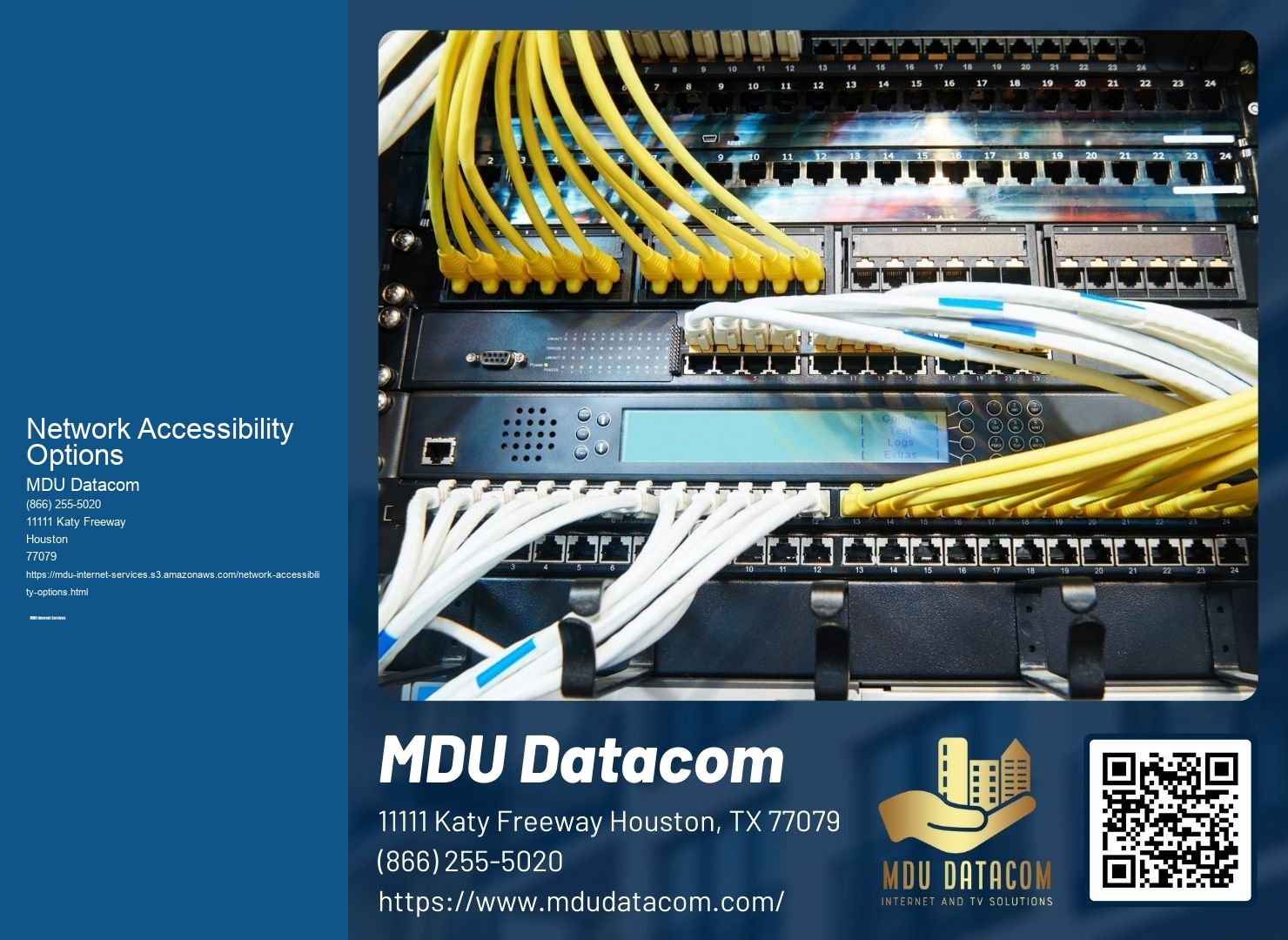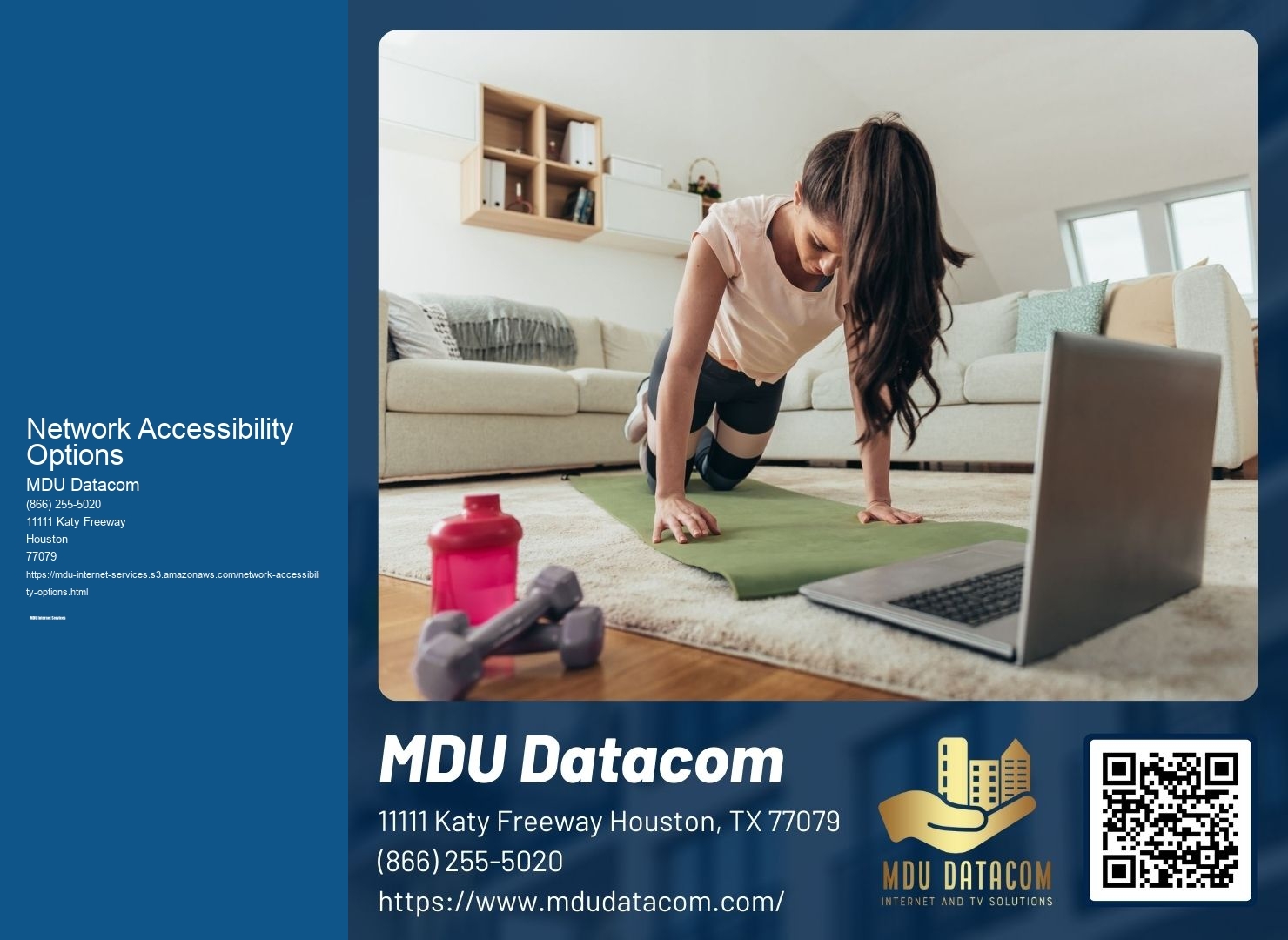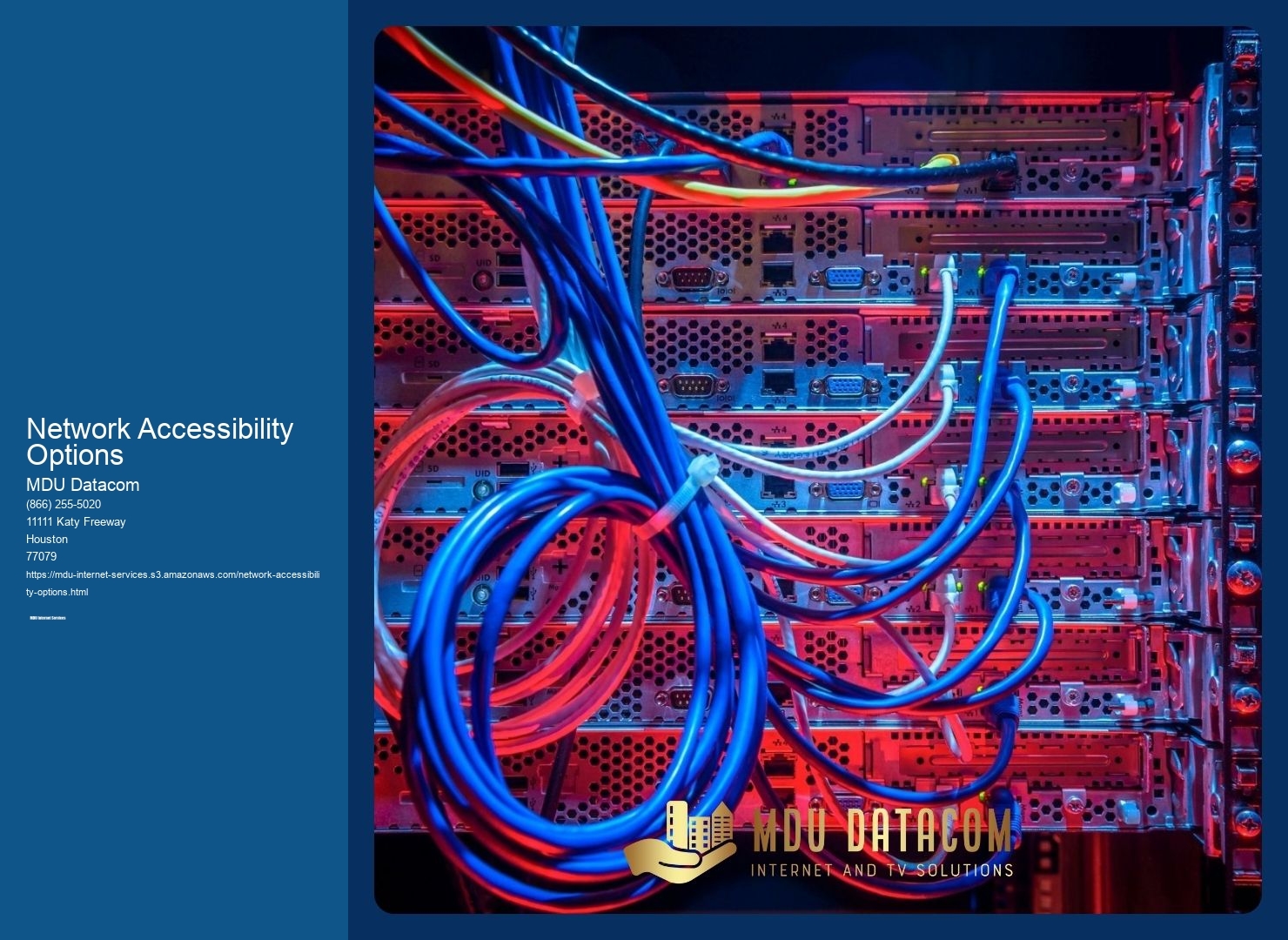

Various techniques are used in internet traffic management to ensure efficient data transmission. One such technique is Quality of Service (QoS), which involves prioritizing certain types of traffic over others based on their importance. Traffic shaping is another technique that involves regulating the flow of data packets to prevent network congestion. Load balancing is used to distribute network traffic across multiple servers or paths, ensuring optimal resource utilization. Additionally, techniques like caching, compression, and content optimization are employed to reduce bandwidth usage and improve data transmission efficiency.
Internet traffic management plays a crucial role in preventing network congestion and maintaining high network speeds. Multi-Family Dwelling Internet Connectivity By regulating the flow of data packets and prioritizing certain types of traffic, traffic management techniques help in balancing the network load and preventing bottlenecks. This ensures that network resources are utilized efficiently, reducing the chances of congestion and maintaining high network speeds. Additionally, techniques like traffic shaping and load balancing help in distributing network traffic evenly, further preventing congestion and ensuring smooth data transmission.
Internet traffic management is essential for ensuring data security and protecting against cyber threats. By implementing traffic filtering and firewall rules, internet traffic management systems can block malicious traffic and prevent unauthorized access to the network. Traffic encryption techniques, such as SSL/TLS, help in securing data transmission and protecting sensitive information from interception. Additionally, traffic management systems can detect and mitigate Distributed Denial of Service (DDoS) attacks, ensuring the availability and integrity of online services.

Internet traffic management can help in prioritizing certain types of traffic, such as video streaming or VoIP calls, by implementing Quality of Service (QoS) mechanisms. QoS allows businesses to allocate network resources based on the specific requirements of different types of traffic. For example, video streaming traffic can be given higher priority to ensure smooth playback and minimize buffering, while other types of traffic can be allocated lower priority. This prioritization helps in delivering a seamless user experience for real-time applications like video streaming or VoIP calls.
Fiber Optic Internet for CondominiumsInternet traffic management faces several challenges, but they can be overcome to ensure smooth network operations. Residential Community Wi-Fi Services One challenge is the increasing volume of internet traffic, which requires scalable and efficient traffic management solutions. This can be addressed by implementing advanced traffic management systems that can handle high traffic loads and dynamically allocate network resources. Another challenge is the diversity of network devices and protocols, which can complicate traffic management. Standardization and interoperability between different devices and protocols can help in overcoming this challenge. Additionally, continuous monitoring and analysis of network traffic can help in identifying and resolving any performance or security issues, ensuring smooth network operations.

There are several assistive technologies available that can improve network accessibility for individuals with visual impairments. Building-Wide Internet Connectivity One such technology is screen reader software, which converts text on a computer screen into synthesized speech or braille output. This allows individuals with visual impairments to navigate websites, read emails, and access other online content. Another assistive technology is screen magnification software, which enlarges the text and images on a screen, making them easier to see. Additionally, there are refreshable braille displays that can be connected to a computer or mobile device, allowing individuals to read braille output in real-time.
Network accessibility can be enhanced for individuals with hearing impairments through various strategies. One important technology is closed captioning, which provides text-based transcriptions of audio content. This allows individuals with hearing impairments to read the dialogue and sounds in videos, webinars, and other multimedia content. Another technology is video relay services, which enable individuals with hearing impairments to communicate over the phone using sign language interpreters. Additionally, there are text-based communication tools, such as instant messaging and email, that can be used to facilitate communication for individuals with hearing impairments.

MDUs, or Multi-Dwelling Units, primarily use fiber optic internet connections. Fiber optic technology uses thin strands of glass or plastic to transmit data as pulses of light, allowing for faster and more reliable internet speeds compared to cable or DSL connections. Fiber optic connections are capable of delivering symmetrical upload and download speeds, making them ideal for MDUs where multiple residents may be simultaneously streaming, gaming, or working from home. Additionally, fiber optic connections have a higher bandwidth capacity, ensuring that MDU residents can enjoy uninterrupted internet access even during peak usage times.
Residents of MDUs have the ability to request customized internet service agreements or contracts that cater to their specific needs and preferences. These agreements can be tailored to include various provisions such as specific bandwidth requirements, data usage limits, and service level agreements. Additionally, residents can request provisions related to security measures, such as firewall protection and encryption protocols, as well as provisions related to customer support and technical assistance. By requesting customized agreements, residents can ensure that their internet service meets their unique requirements and provides them with a seamless and satisfactory online experience.
MDU, or Multi-Dwelling Unit, handles internet speed throttling during congested periods by implementing various techniques and technologies to ensure a smooth and uninterrupted internet experience for its users. One such technique is the use of Quality of Service (QoS) mechanisms, which prioritize certain types of network traffic over others based on predefined rules. This allows MDU to allocate more bandwidth to critical applications such as video streaming or online gaming, while limiting the bandwidth for less time-sensitive activities like file downloads. Additionally, MDU may employ traffic shaping techniques to manage network congestion by controlling the flow of data packets. This involves prioritizing and regulating the transmission of data to prevent network congestion and ensure a fair distribution of bandwidth among users. By implementing these strategies, MDU can effectively handle internet speed throttling during congested periods and provide a reliable and high-quality internet service to its residents.
MDU, or Multi-Dwelling Unit, handles requests for internet service upgrades in properties with aging or outdated networking equipment by conducting a thorough assessment of the existing infrastructure. This assessment includes evaluating the condition of the networking equipment, identifying any potential bottlenecks or limitations, and determining the feasibility of upgrading the equipment. MDU may also consider factors such as the age of the property, the number of units, and the specific needs of the residents. Based on this assessment, MDU will develop a comprehensive plan for upgrading the networking equipment, which may involve replacing outdated hardware, improving connectivity, and implementing advanced technologies such as fiber-optic cables or wireless access points. Additionally, MDU may collaborate with property owners or managers to ensure a smooth transition and minimize disruption to the residents. By addressing the specific needs of properties with aging or outdated networking equipment, MDU aims to provide reliable and high-speed internet services to enhance the overall connectivity experience for residents.
MDU, or Multi-Dwelling Unit, typically handles disputes between residents regarding internet service quality by following a structured and comprehensive approach. Firstly, MDU management may appoint a dedicated customer service representative who acts as a mediator between the residents and the internet service provider (ISP). This representative ensures effective communication and resolution of issues. Additionally, MDU may have a well-defined escalation process in place, where residents can report their concerns to the management, who then escalate the matter to the ISP for further investigation and resolution. Furthermore, MDU may conduct regular surveys or feedback sessions to gauge the satisfaction levels of residents with the internet service quality. This helps in identifying any recurring issues and taking proactive measures to address them. Overall, MDU strives to maintain a harmonious living environment by promptly addressing and resolving disputes related to internet service quality.
Residents of MDUs have the option to request priority technical support or troubleshooting assistance during critical situations with their internet services. In such circumstances, they can reach out to the service provider's dedicated support team, who are equipped to handle urgent issues promptly and efficiently. These specialized support personnel possess the necessary expertise and knowledge to address a wide range of technical problems that may arise in MDU internet services. By availing themselves of this priority assistance, residents can ensure that their critical internet needs are met in a timely manner, minimizing any disruptions or inconveniences they may face.